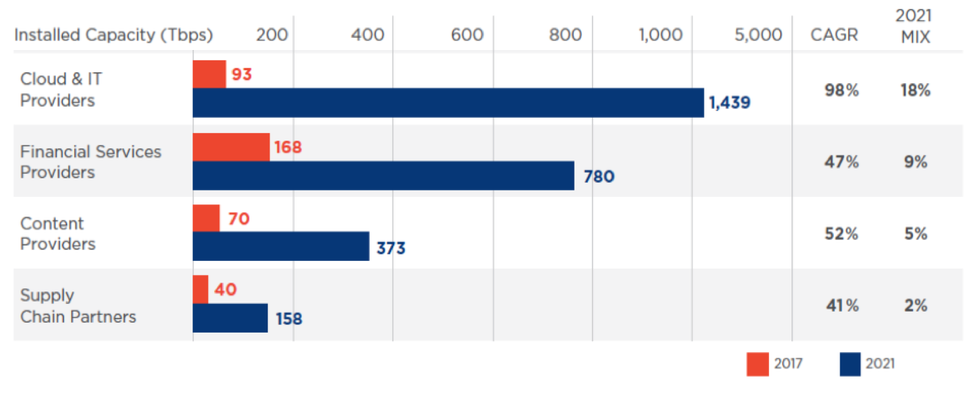Why higher bandwidth doesn’t equal faster throughput (or goodput)
Bandwidth capacity is expected to rise dramatically among high-traffic and data-intensive sectors like cloud, IT and media content providers. According to a recent report by Equinix, these companies are projected to have between three and 16 times more installed bandwidth capacity in 2021 compared to 2017 (Figure 1).

Figure 1: Source – Equinix’s Content and Digital Media Playbook
If you’re in Media & Entertainment, there’s a good chance your company has recently increased bandwidth capacity or is planning to soon. However, higher bandwidth does not automatically make media file transfers faster.
Bandwidth vs. Throughput
Network bandwidth and network throughput are not the same. Available network bandwidth determines the potential maximum speed data can move, whereas throughput (or more specifically goodput) is the actual speed data moves.
When moving media files over long distances or congested networks without acceleration technology, throughput can be dramatically lower than bandwidth because standard Internet transfers use single-stream TCP. Upgrading your network without acceleration is like going from country road to a major highway, while driving a moped; you could go super fast if your transport mechanism allowed it.
In order to take full advantage of available bandwidth, Signiant replaces TCP with our proprietary UDP-based acceleration protocol. Compared to TCP-based protocols (including FTP), Signiant acceleration transfers media files orders of magnitude faster, especially as bandwidth and transfer distance increase.
For example, as depicted in the chart below (Figure 2), one hour of HD content takes about 11 hours to transfer between LA and London using TCP over 1Gpbs bandwidth. Note that speed doesn’t change with increasing bandwidth, and it is greatly impacted by distance (see latency).
Signiant’s acceleration protocol, on the other hand, takes about three minutes to move the same file over the same bandwidth. Not only is it much faster, relative speed increases as bandwidth increases, no matter the distance, making Signiant even more important for higher bandwidth connection.

Figure 2: Results of transferring one hour of HD content (encoded at 50 Mbps AVC)
Signiant’s proprietary acceleration and machine learning intelligence
Signiant’s transport mechanism is unique. Many custom-built and open-source file acceleration solutions utilize commoditized UDP. While Signiant’s acceleration technology is UDP based, it’s not commoditized because we’ve made important advances to the protocol.
Acceleration is core to what we do, and we are constantly improving our approach. Along with current patents in this space, Signiant has a new patent-pending transport that adds a layer of intelligence to address unpredictable network conditions (currently available in Jet and Flight). It essentially employs machine learning to adapt to real-time network conditions and provide optimal throughput in every situation.
Lastly, at Signiant we pride ourselves on being easy to work with, which includes having transparent pricing models. For example, we don’t impose file size or bandwidth limits and we never charge extra to utilize higher bandwidth connections. So, if you are one of those media service providers increasing your bandwidth, be sure to get value of your investment with Signiant’s enterprise software products.


